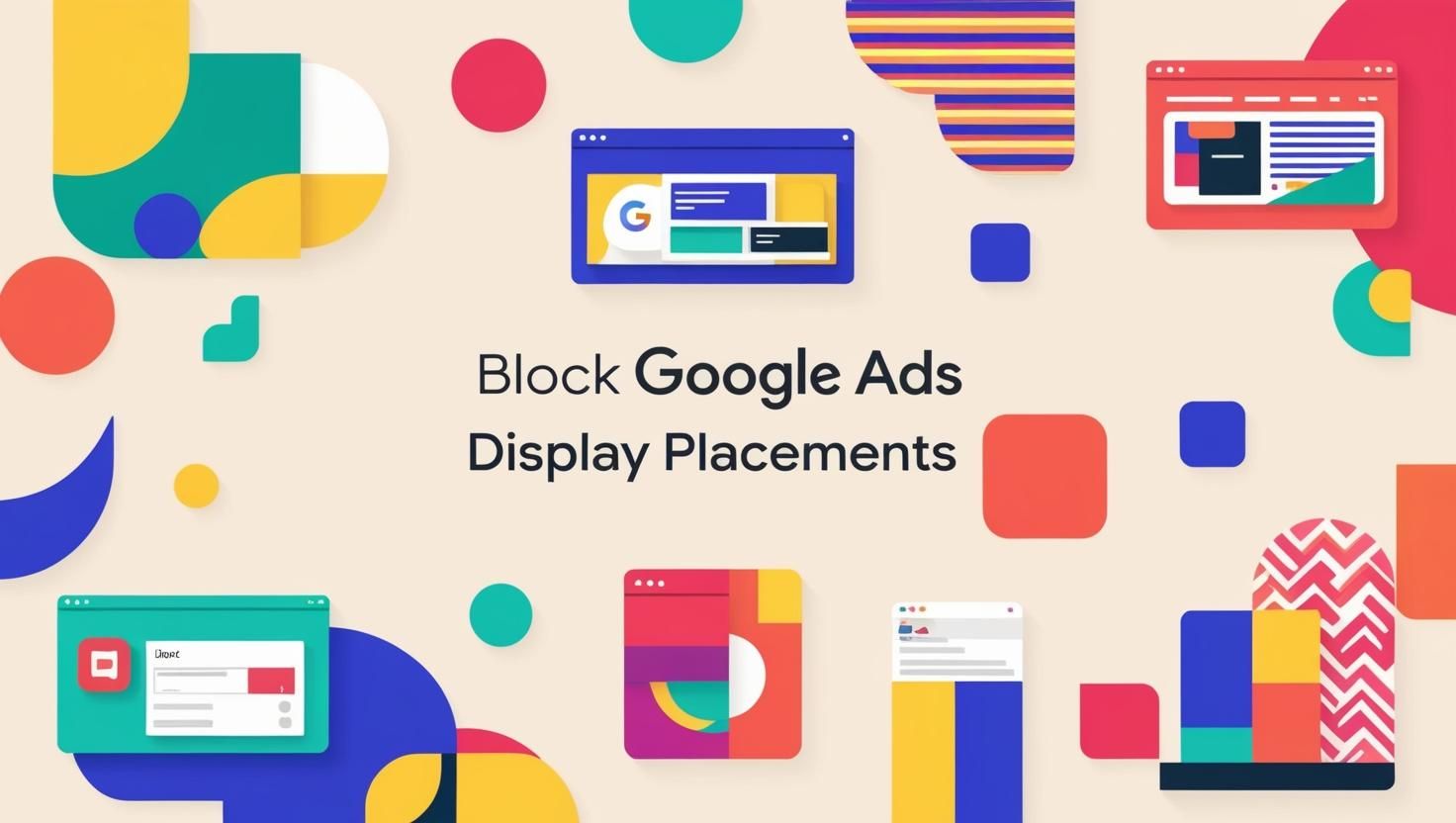Google Display Ads Retargeting
What Is Google Display Ads Retargeting?
Google Display Ads retargeting is a powerful digital marketing strategy that allows businesses to reconnect with website visitors who have previously interacted with their brand. In today's competitive online landscape, capturing and retaining the attention of potential customers is paramount, and retargeting enables businesses to do just that. Through the use of cookies and strategic advertising campaigns, Google Display Ads retargeting offers a tailored approach to engaging with audiences, ultimately driving conversions and maximizing the impact of advertising efforts.
In this article, we will delve into the intricacies of Google Display Ads retargeting, explore its significance for businesses, outline its benefits, and provide practical insights on setting up and optimizing retargeting campaigns. Whether you're new to retargeting or seeking to enhance your existing strategies, this comprehensive guide will equip you with the knowledge and best practices to leverage the full potential of Google Display Ads retargeting.
How Does Google Display Ads Retargeting Work?
Google Display Ads retargeting functions by leveraging cookies to track user interactions with a business's website or app and then displaying targeted ads to these users across the Google Display Network.
When a user visits a website or interacts with an app, cookies are used to collect information about their behavior and preferences. This data is then analyzed through Google Analytics to create a profile of the user's interests and browsing habits. Based on this profile, targeted ads are strategically displayed to the user as they browse other websites within the Google Display Network.
The process allows businesses to stay top-of-mind with potential customers and re-engage them with personalized content, ultimately increasing the likelihood of conversion.
What Is a Cookie and How Is It Used in Retargeting?
A cookie is a small piece of data stored on a user's device by websites to track their online behavior, and in retargeting, cookies are utilized to identify and segment users who have visited a business's website or engaged with its content.
This tracking and segmentation capability is an integral part of retargeting strategies. By using cookies, businesses can understand user preferences, browsing history, and interactions with their website. This data enables targeted advertising, as businesses can identify and reach out to users who have shown interest in their products or services.
What Are the Different Types of Retargeting?
There are various forms of retargeting, including site retargeting through Google Ads, search retargeting through PPC campaigns, and social media retargeting on platforms like Facebook, each tailored to engage specific audiences based on their online behavior.
Site retargeting involves targeting users who have previously visited a website, displaying ads related to their prior interactions to re-engage them. This method relies on cookies and allows businesses to present personalized ads to potential customers, reminding them of products or services they showed interest in.
On the other hand, search retargeting leverages users' search history or keyword usage, enabling advertisers to reach individuals who have shown intent or interest in particular products or services. By analyzing search behavior, businesses can target prospects actively looking for relevant content.
Social media retargeting aims to reconnect with users who have engaged with a brand's social media profiles or interacted with specific posts, enabling targeted ads to be displayed to these individuals across social platforms. This approach helps to keep the brand top-of-mind and encourages further engagement.
Why Is Display Ads Retargeting Important for Businesses?
Google Display Ads retargeting holds significant importance for businesses as it enables precise audience segmentation, allowing tailored ads to be displayed to users who have already expressed interest in the business, leading to higher conversion rates and improved ROI.
This retargeting strategy is vital for businesses to maintain a continuous presence in front of potential customers, nurturing their initial interest and guiding them towards making a purchase decision.
By leveraging user behavior and interests, businesses can segment their audience effectively, ensuring that the displayed ads are relevant and personalized. The tailored approach not only enhances user experience but also significantly increases the likelihood of driving conversions and maximizing return on investment (ROI). Through strategic retargeting, businesses can also reinforce their brand message and value proposition, fostering long-term customer relationships.
What Are the Benefits of Display Ads Retargeting?
Google Display Ads retargeting offers several benefits, including increased conversion rates, cost-effective advertising, targeted ads to specific audiences, and heightened brand awareness, which collectively contribute to a business's marketing success. By reaching potential customers who have previously interacted with your website or shown interest in your products, Google Display Ads retargeting helps to reinforce brand familiarity and trust. This tailored approach increases the likelihood of conversion as it serves as a reminder and encourages them to complete their purchase. Retargeting tends to be cost-effective, as you are focusing your advertising efforts on a warm audience, which results in higher engagement and conversion rates.
In addition, the capability to target specific audiences based on their behavior and interests ensures that your ads are displayed to those most likely to be interested, maximizing the impact of your marketing budget. The use of relevant images in the ads enhances visual appeal, capturing the audience's attention and reinforcing brand messaging. Incorporating compelling call-to-action buttons with high click-through rates further boosts the effectiveness of retargeting efforts, driving traffic back to your site and guiding users towards the desired actions.
Leveraging Display Ads retargeting elevates a business's marketing strategy by delivering personalized, cost-efficient, and impactful advertising to a targeted audience, ultimately increasing conversion rates and brand visibility.
Increased Conversion Rates
Google Display Ads retargeting has been proven to significantly enhance conversion rates by reconnecting with users who have previously engaged with a business, leading to a higher likelihood of conversion due to their existing interest.
Retargeting is a powerful strategy that leverages user behavior and engagement data to deliver relevant ads to potential customers. According to a recent study by Whale Traffic, retargeted customers are 70% more likely to convert than those who aren't. This highlights the immense impact of targeted advertising in influencing purchasing decisions.
By analyzing user interactions and preferences, businesses can tailor their retargeting campaigns to effectively capture the attention of potential customers who have already shown an interest in their products or services.
Cost-Effective Advertising
Display Ads retargeting proves to be a cost-effective advertising method compared to traditional PPC campaigns, especially when implemented with the support of a Google partner agency, allowing businesses to maximize their marketing budget and achieve optimal returns.
Through Google Display Ads retargeting, businesses can effectively reach potential customers who have already expressed an interest in their products or services, ensuring that their marketing efforts are focused and their budget is utilized efficiently. By partnering with a Google agency, businesses can benefit from expert insights, strategic planning, and access to advanced targeting tools and audience data, resulting in higher conversion rates and improved return on investment.
Targeted Ads to Specific Audiences
Google Display Ads retargeting allows businesses to deliver targeted ads to specific audience segments based on their online interactions, ensuring that the content resonates with their interests and preferences, even adapting to emerging trends like voice search. By utilizing Google Display Ads retargeting, businesses can effectively reach potential customers who have shown interest in their products or services. This form of precision targeting enables customized ad delivery, ensuring that the right message reaches the right audience at the right time.
With the evolving landscape of online search, the adaptability of this retargeting approach to trends such as voice search enhances its relevance and efficacy.
Increased Brand Awareness
Display Ads retargeting contributes to heightened brand awareness by maintaining a consistent presence in front of users who have previously engaged with a business, fostering brand recognition and recall, supported by compelling statistical evidence. This form of retargeting plays a pivotal role in reinforcing the brand message by reinforcing the product or service offerings in the minds of the audience. The repetitive exposure to these ads creates a lasting impression, increasing the likelihood of potential customers recalling the brand when making purchase decisions.
How to Set Up Google Display Ads Retargeting?
Setting up Google Display Ads retargeting involves installing the Google Ads remarketing tag, creating custom audiences based on specific criteria, and configuring retargeting campaigns and ads to effectively engage with the target audience.
To begin the process, navigate to your Google Ads account and click on the 'Tools & Settings' tab. From the dropdown menu, select 'Audience Manager.' Next, click on 'Audience Sources' and then 'Google Ads tag.' Follow the instructions to generate your remarketing tag and install it across your website.
Once the tag is set up, move on to creating custom audience segments. Identify the specific parameters, such as page visits or interactions, that define your target audience. After segmenting your audience, proceed to structure retargeting campaigns by choosing ad formats, setting bid strategies, and defining ad placements for optimal performance.
Install the Google Ads Remarketing Tag
The initial step in setting up Google Display Ads retargeting involves placing the Google Ads remarketing tag on a business's website, enabling the tracking of user interactions and facilitating the retargeting process across the Google Display Network. To accomplish this, businesses can access the Google Ads account and navigate to the 'Audience Manager' section. Within the 'Audience sources', they can select 'Google Ads tag' and proceed to create a new tag. Subsequently, the generated tag code needs to be added to the website's HTML, preferably within the
section, so that it appears on all pages. It's essential to ensure proper placement for seamless tracking of user interactions.
Once the tag is installed, it starts collecting data on website visitors, including page views, interactions, and conversions, which becomes instrumental for creating audience segments for targeted advertising. This precise data plays a crucial role in serving relevant ads to users who have previously shown interest in the business's offerings.
Create Custom Audiences
Businesses can create custom audiences for Google Display Ads retargeting by leveraging specific criteria, such as user behavior or demographic data, in conjunction with Google Analytics, to tailor ad content to distinct user groups.
This process involves segmenting website visitors based on their interactions with the site, allowing businesses to categorize users into relevant groups. By analyzing user engagement data, such as page views, session duration, and conversion activities, Google Analytics provides valuable insights for audience customization. These insights enable advertisers to create targeted ad campaigns that resonate with the needs and interests of different audience segments, ultimately enhancing the effectiveness of their Google Display Ads retargeting strategy.
Set Up Retargeting Campaigns and Ads
The final step in implementing Google Display Ads retargeting involves structuring retargeting campaigns and ad creatives tailored to engage the custom audience segments, ensuring that the content aligns with user interests and leads to relevant landing pages for potential conversions.
To achieve this, marketers need to consider the specific interests and behaviors of their designated audience segments, tailoring ad creatives with compelling sales-driven messages to increase the likelihood of conversions. Integration with relevant landing pages is crucial, as it ensures a seamless transition from ad engagement to potential customer action. The ad messaging should incorporate assigned keywords and entities to resonate with the audience, making the content both relevant and impactful. This approach optimizes the overall campaign's effectiveness, maximizing the potential for driving success on the Google Display Ads platform.
Best Practices for Google Display Ads Retargeting
Implementing best practices for Google Display Ads retargeting involves segmenting audiences effectively, utilizing eye-catching visuals and messaging, setting frequency caps for ad exposure, and continuously testing and optimizing campaigns for maximum impact, especially within B2B marketing contexts.
Segmenting audiences for retargeting involves grouping users based on their behavior and interests to deliver more personalized ads that resonate with their needs. In terms of visual and messaging tactics, it's crucial to create compelling ad creatives and tailored messaging that align with the audience segments, aiming to reignite their interest and drive conversions.
Setting frequency caps is essential to prevent ad fatigue and ensure that your audience doesn't get overwhelmed by your ads, maintaining a balanced exposure level.
In B2B marketing scenarios, optimizing campaigns involves understanding the unique purchase journey and decision-making process of businesses, tailoring the retargeting strategies to address specific pain points and deliver relevant solutions.
Segment Your Audiences
Effective audience segmentation in Google Display Ads retargeting involves leveraging data and statistical insights to categorize users based on their behavior, preferences, and interactions, allowing for targeted ad delivery and personalized content experiences. This segmentation strategy is pivotal for advertisers to identify the most receptive audience segments and tailor their ad creatives and messaging accordingly. By analyzing data-driven insights from previous user engagements, user segments can be defined, taking into account factors such as browsing history, purchase intent, demographics, and online activities.
Such in-depth statistical analysis gives the power to advertisers to craft highly relevant and personalized ads that resonate with the specific interests and needs of each segment, leading to improved engagement and conversion rates.
Use Eye-Catching Visuals and Messaging
Employing visually appealing creatives and compelling messaging in Google Display Ads retargeting is crucial to capturing user attention and driving engagement, especially when tailored for social media platforms with high user interaction.
By utilizing relevant images and content that resonate with the target audience's interests and needs, advertisers can enhance their chances of sparking interest and recapturing the attention of potential customers. The integration of eye-catching visuals and captivating messaging not only ensures that the retargeted ads stand out amidst the social media activity but also increases the likelihood of encouraging users to revisit the website or take the desired action.
Strategically aligning the creative elements and messaging with the assigned keywords and entities contributes to the overall relevance and depth of the retargeting strategy, reinforcing brand recall and encouraging conversion.
Set Frequency Caps
Implementing frequency caps in Google Display Ads retargeting is essential to manage ad exposure and prevent user fatigue by limiting the number of times a particular ad is displayed to individual users across the Google Display Network.
This practice not only avoids overwhelming users with repetitive advertisements but also contributes to improving the overall user experience. By setting a frequency cap, advertisers have better control over the frequency of ad impressions, which can positively impact ad performance and user engagement.
Proper utilization of frequency capping ensures that ads reach users in a way that sustains their interest without becoming intrusive, leading to enhanced conversion rates and ad effectiveness. It's important to strike a balance and prevent underexposure by setting frequency caps at appropriate levels that align with user behavior and campaign objectives.
Test and Optimize Your Campaigns
Continuous testing and optimization of Google Display Ads retargeting campaigns is crucial to refine ad performance, improve website engagement, and maximize the effectiveness of retargeting efforts in driving conversions and sales.
To achieve this, marketers employ an iterative approach, constantly refining ad creatives, messaging, and targeting parameters to align with audience behavior and preferences. Website analytics integration plays a pivotal role in this process, providing essential data on user interactions, bounce rates, and conversion paths to inform and guide optimization strategies.
By leveraging this data, advertisers can adapt their retargeting campaigns in real-time, adjusting bid strategies, placements, and ad formats to enhance user experience and increase the likelihood of converting valuable leads.
Frequently Asked Questions
What is Google Display Ads Retargeting?
Google Display Ads Retargeting is a form of online advertising where ads are targeted to users who have previously visited your website or interacted with your brand in some way. This allows for more personalized and targeted advertising, increasing the chances of conversion.
How does Google Display Ads Retargeting work?
Google Display Ads Retargeting uses cookies to track the browsing behavior of users on your website. When these users leave your site and visit other websites that are part of the Google Display Network, they will be shown ads related to your brand or products.
What is the benefit of using Google Display Ads Retargeting?
The main benefit of Google Display Ads Retargeting is that it allows you to reach potential customers who have already shown interest in your brand. This increases the chances of conversion and can also help to improve brand recall and recognition.
Can I customize my retargeting ads on Google Display Network?
Yes, you can customize your retargeting ads on the Google Display Network. You can choose which websites your ads will appear on, what type of ad format you want to use, and the frequency at which your ads will be shown to users.
Are there any limitations to using Google Display Ads Retargeting?
One limitation of Google Display Ads Retargeting is that it can only reach users who have already visited your website. This means that it may not be effective for reaching new or potential customers who have not yet interacted with your brand.
How can I measure the success of my Google Display Ads Retargeting campaign?
You can measure the success of your Google Display Ads Retargeting campaign by tracking metrics such as click-through rates, conversion rates, and return on investment. You can also use A/B testing to optimize your ads and see which variations perform the best.










